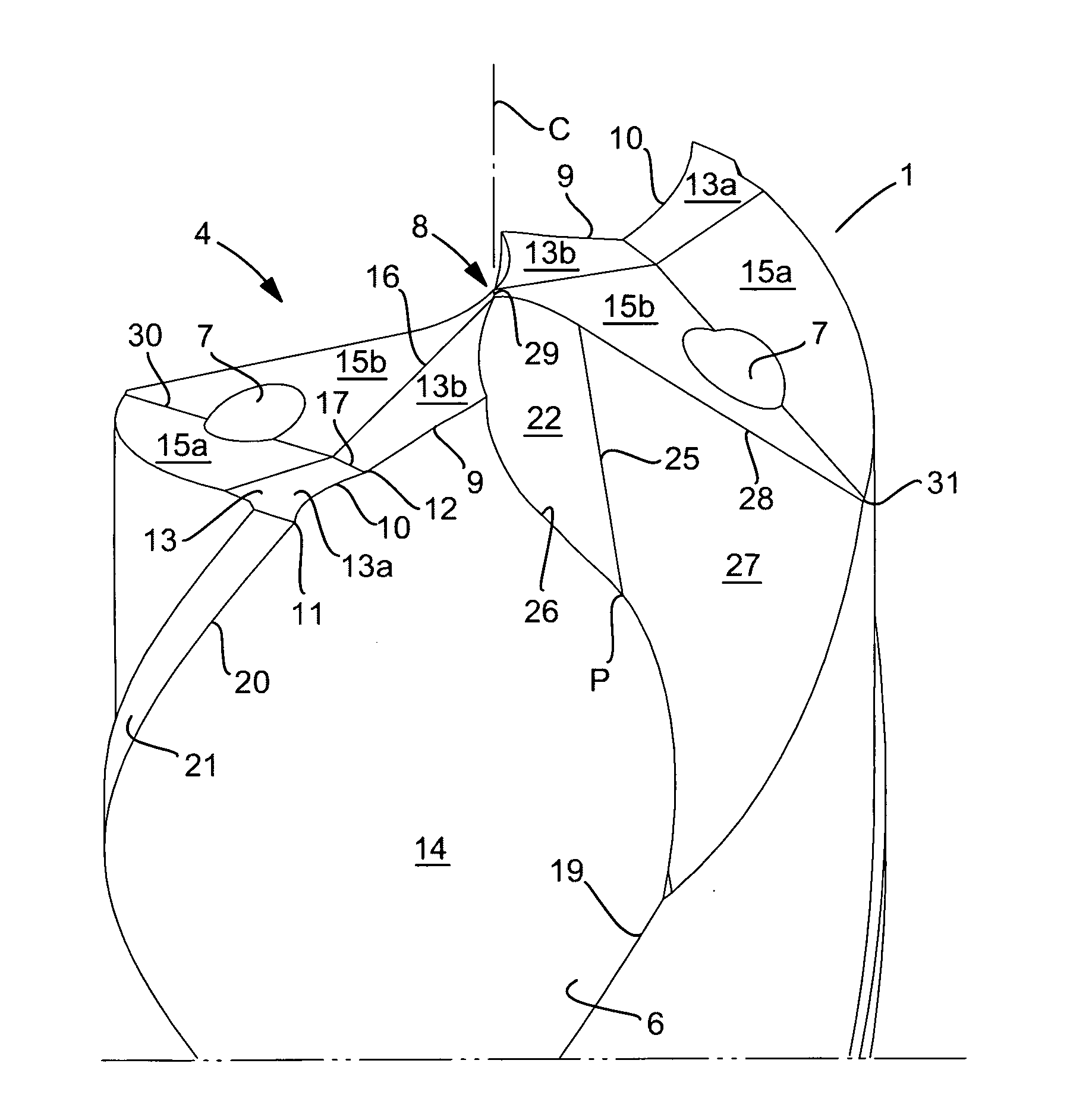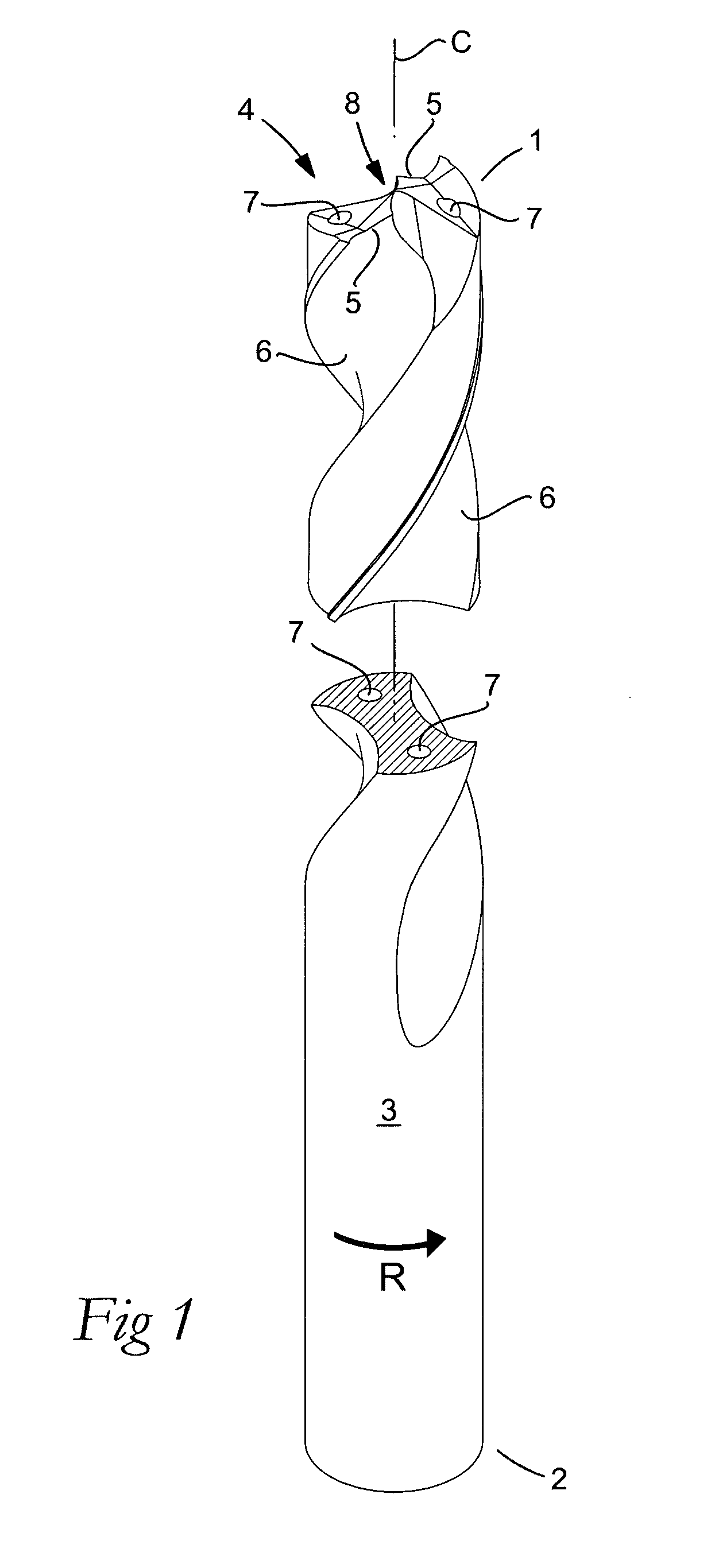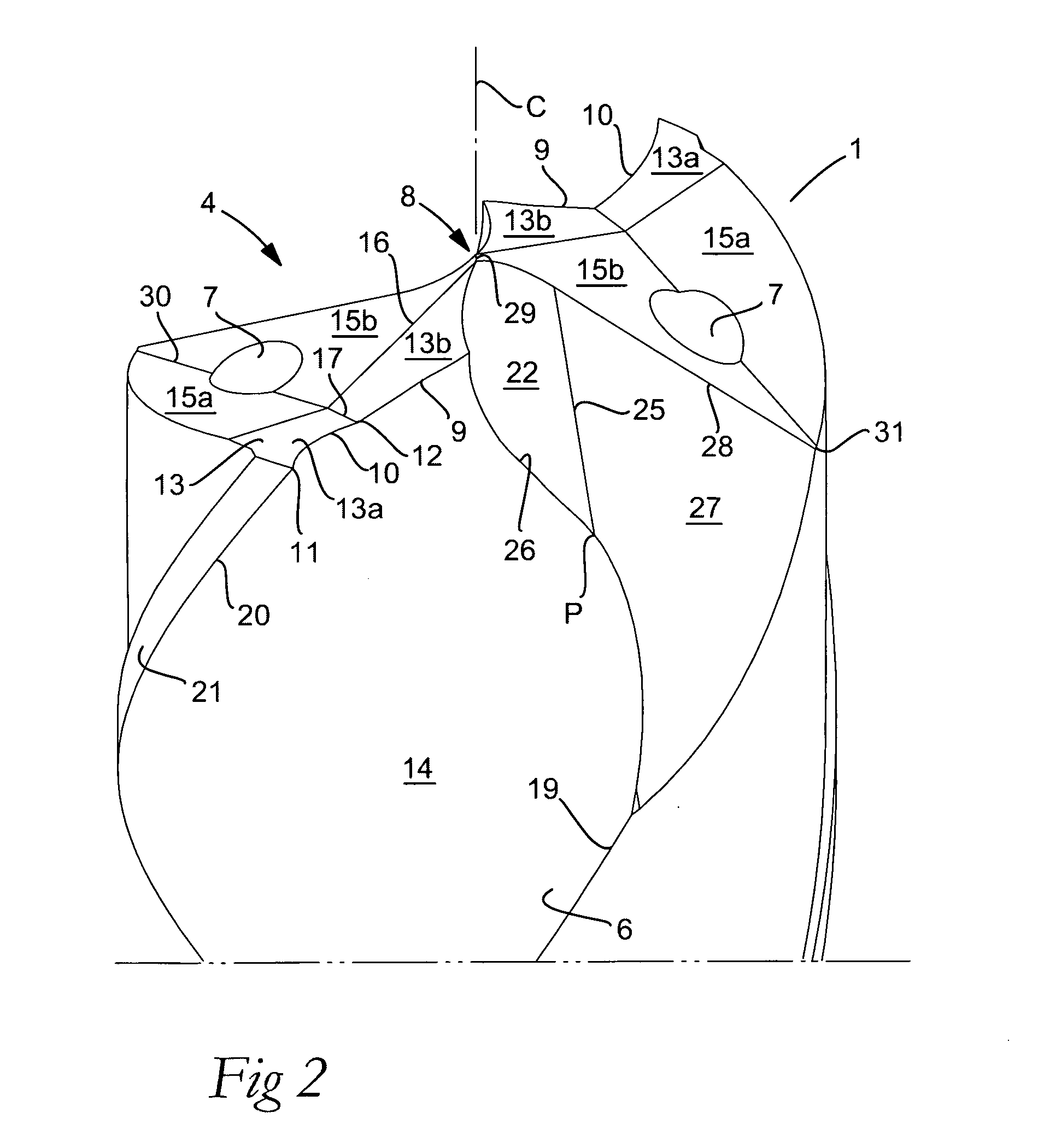Drill body
a drill head and body technology, applied in the field of drill head, can solve the problems of excessive acuteness of the tip part of the drill head, limited positive nose angle of the drill head, and difficulty in cooling and lubricating at least the front portion of the tip part of the cooling liquid, and achieve the effect of moderate cutting for
- Summary
- Abstract
- Description
- Claims
- Application Information
AI Technical Summary
Benefits of technology
Problems solved by technology
Method used
Image
Examples
Embodiment Construction
[0019]In an embodiment, the drill body according to the invention is in the form of a twist drill, which henceforth in brief only is denominated “drill”, and which includes front and rear ends 1, 2 between which a center axis C extends around which the drill is rotatable in a predetermined direction of rotation R. A rotationally symmetrical envelope surface 3 is concentric with the center axis C. Along the greater part of the length of the drill, envelope surface 3 is cylindrical, but transforms in front into a slightly conical, forwardly diverging section, which is not perceivable to the naked eye. The diametrical conicity of the front section can be as small as 0.06 / 100 mm. In the front end 1, the drill is formed with a head in its entirety designated 4, which includes two identical cutting edges 5. In front of each cutting edge, as viewed in the direction of rotation, a chip flute 6 is formed, which in this case is spiral or helicoidal having a certain pitch, suitable for the pur...
PUM
| Property | Measurement | Unit |
|---|---|---|
| width | aaaaa | aaaaa |
| angle | aaaaa | aaaaa |
| angle | aaaaa | aaaaa |
Abstract
Description
Claims
Application Information
 Login to View More
Login to View More - R&D
- Intellectual Property
- Life Sciences
- Materials
- Tech Scout
- Unparalleled Data Quality
- Higher Quality Content
- 60% Fewer Hallucinations
Browse by: Latest US Patents, China's latest patents, Technical Efficacy Thesaurus, Application Domain, Technology Topic, Popular Technical Reports.
© 2025 PatSnap. All rights reserved.Legal|Privacy policy|Modern Slavery Act Transparency Statement|Sitemap|About US| Contact US: help@patsnap.com



